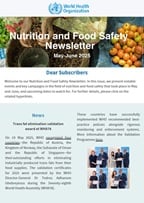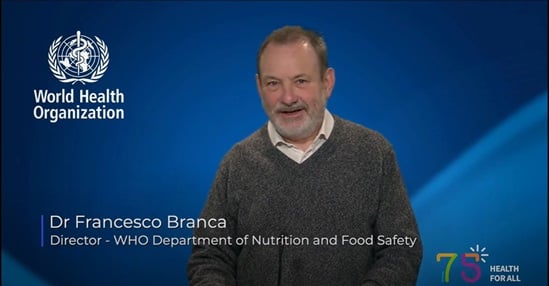Micronutrients
Micronutrients are vitamins and minerals needed by the body in very small amounts. However, their impact on a body’s health are critical, and deficiency in any of them can cause severe and even life-threatening conditions. They perform a range of functions, including enabling the body to produce enzymes, hormones and other substances needed for normal growth and development. Deficiencies in iron, vitamin A and iodine are the most common around the world, particularly in children and pregnant women. Low- and middle-income counties bear the disproportionate burden of micronutrient deficiencies.
Micronutrient deficiencies can cause visible and dangerous health conditions, but they can also lead to less clinically notable reductions in energy level, mental clarity and overall capacity. This can lead to reduced educational outcomes, reduced work productivity and increased risk from other diseases and health conditions.
Many of these deficiencies are preventable through nutrition education and consumption of a healthy diet containing diverse foods, as well as food fortification and supplementation, where needed. These programmes have made great strides in reducing micronutrient deficiencies in recent decades but more efforts are needed
Micronutrient deficiencies can cause several serious health issues. A lack of iron, folate and vitamins B12 and A can lead to anaemia. Anaemia is a condition in which there is a reduced number of red blood cells or haemoglobin concentration, causing fatigue, weakness, shortage of breath and dizziness. This can further lead to difficulties in functioning in work, education and community engagement. An estimated 42% of children under 5 years of age and 40% of pregnant women worldwide are anaemic.
Severe iodine deficiency can lead to brain damage and during pregnancy can cause a number of issues including stillbirth, spontaneous abortion and congenital anomalies. Less severe iodine deficiency may still cause mental impairment that reduces intellectual capacity. The preferred strategy for the control of iodine deficiency remains universal salt iodization, which requires that all food-grade salt used in household and food processing be fortified with iodine. UNICEF estimates that 66% of households globally have access to iodized salt.
Vitamin A deficiency is the leading cause of preventable blindness in children and increases the risk of disease and death from severe infections such as diarrhoeal disease and measles. Vitamin A deficiency may also occur in women during the last trimester of pregnancy in high-risk areas. Breastfeeding is the best way to protect babies from vitamin A deficiency and, in areas where vitamin A deficiency is a public health problem, vitamin A supplementation is recommended in infants and children 6-59 months of age.
WHO works with Member States and partners to prevent micronutrient deficiencies though a number of programmes and following the WHO 2016–2025 nutrition strategy. These programmes include iron and folic acid supplementation, high dose vitamin A supplementation, the promotion of breastfeeding, fortification of foods with micronutrients, and healthy, diverse diets containing foods naturally rich in vitamin and minerals. For example, salt iodization has helped reduce the rate of iodine deficiency around the world, while the fortification of wheat flour with iron and folic acid has helped reduce rates of anaemia and neural tube defects.
WHO collaborates with UN partners to disseminate global guidance on the assessment of micronutrient status and effective micronutrient interventions. These guidelines allow WHO and other agencies to better respond to populations affected by emergencies when micronutrient deficiencies are more common due to chronic and severe food insecurity.












